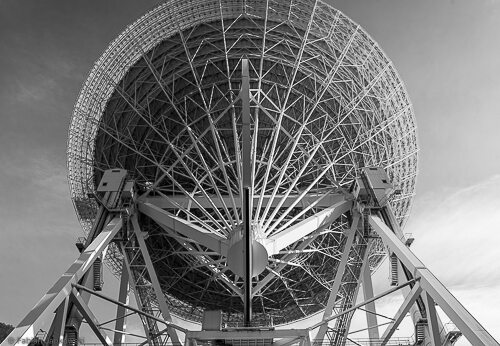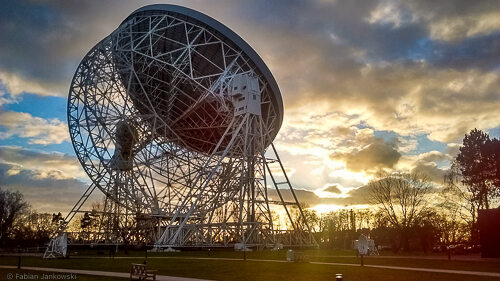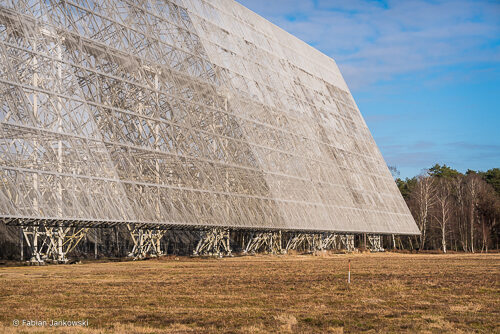I find astronomical instrumentation quite exciting. Fortunately, I could travel to several telescope facilities due to my work. Here is a list of telescopes that I currently use, have used, or have simply visited.
-
Australia Telescope Compact Array (ATCA): radio interferometer, 6 antennas, 22 metres each, 5 antennas can be repositioned for different array configurations, approximately 6 km maximum baseline, wide range of observing frequencies supported, Australia.
-
Effelsberg radio telescope: radio single dish, 100 metres, high-frequency capability, ultra-broadband receivers, Germany.

-
Upgraded Giant Metrewave Radio Telescope (uGMRT): radio interferometer, Y-shaped array with a dense core, 30 antennas, 45 metres each, approximately 25 km maximum baseline, India.
-
Gran Telescopio Canarias (GranTeCan, GTC): optical, 10.4-metre segmented primary mirror, one of the flagship optical telescopes on La Palma, Canary Islands, Spain.
-
Lovell Telescope: radio single dish, 76.2 metres (250 feet), UK.

-
Major Atmospheric Gamma Imaging Cherenkov (MAGIC) telescopes: very high-energy gamma-rays, ground-based imaging atmospheric Cherenkov telescopes, two telescopes, segmented mirrors, 17 metres each, Canary Islands, Spain.
-
Karoo Array Telescope 7 (KAT-7): 7 antennas in the Karoo desert, a precursor for the MeerKAT telescope, South Africa.

- MeerKAT telescope array: radio interferometer, 64 antennas, 13.9 metres each, dense core, approximately 8 km maximum baseline, South Africa.

-
Molonglo Observatory Synthesis Telescope (MOST): radio interferometer, cross-shaped array aligned east-west and north-south, cylindrical reflector, about 1.609 km (1 mile) long east-west and 10 metres wide, Australia.
-
Nançay Radio Telescope (NRT): radio, located at the Nançay Radio Observatory (NRO) in central France, Krauss type telescope, 94-metre dish equivalent, L- and S-band receivers, France.

- NenuFAR: radio, very low-frequency radio telescope (10 - 85 MHz), located at the Nançay Radio Observatory (NRO) in central France, an interferometric array of 96 mini-arrays, dense core with a small number of long baselines (a few kilometres), France.

-
LOw Frequency ARray (LOFAR): array of tens of stations spread across most of Europe, core stations in the Netherlands, operates as a VLBI array (International LOFAR telescope; ILT) and in standalone mode by the local station owners, LBA and HBA frequency bands using separate antenna modules, Europe.
-
Nordic Optical Telescope (NOT): optical, 2.56-metre primary mirror, Canary Islands, Spain.
-
Parkes Murriyang radio telescope: radio single dish, 64 metres, Australia.